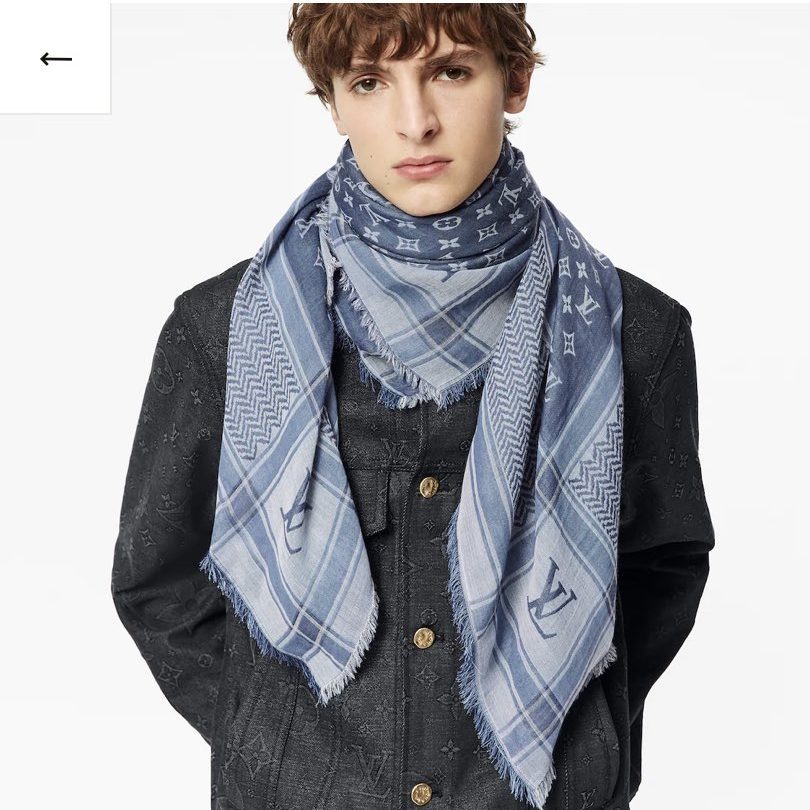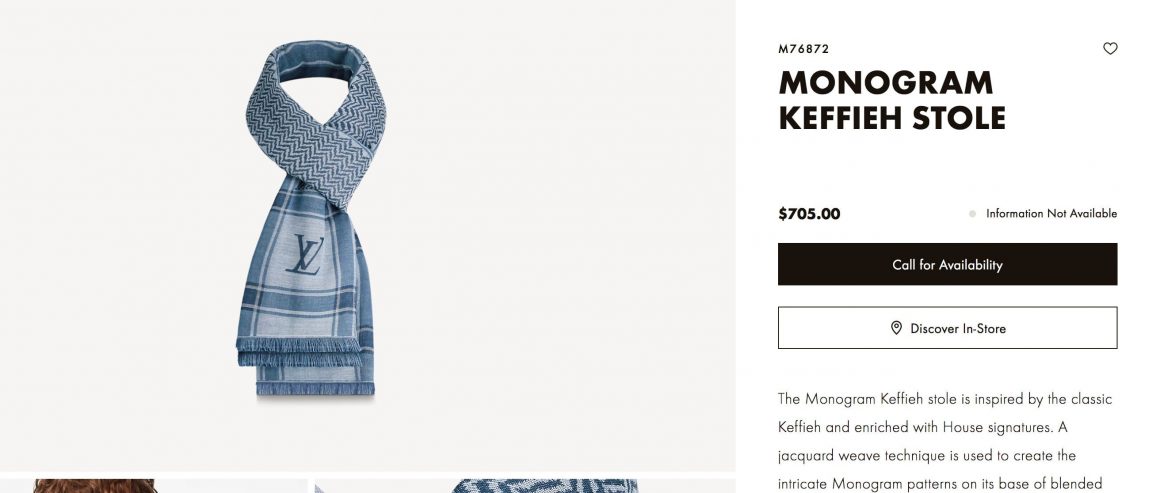The Keffiyeh is not merely a scarf and has been used by Palestinians for decades as a symbol of resistance that was later adopted region-wide.
“Exploitative”, “shameless” and “wrong”—this has been the global response to Louis Vuitton’s [LV] latest edition, a $705 Keffiyeh.
LV’s “Monogram Keffieh stole” provides a “modern” twist to the traditional Palestinian Keffiyeh, imprinted with the brand’s logo in place of the original pattern.
The fashion statement has been described as a complete erasure of the essence of the traditional, political icon which has shaped an identity for decades.
While the release comes amid a global and growing solidarity movement in support of Palestine, LV has yet to confirm whether this too is a sign of championing the Palestinian cause. However, its choice of colours – like the Israeli flag, blue and white – have generated many to question the intention behind it.
But the Keffiyeh has long-inspired luxury brands, and with a $890 price tag, fashion enthusiasts can also get their hands on a Fendi version that has also been criticised for exploit the Palestinian cause and diminishing the value of the symbolic Keffiyeh.
Read also: How this Palestinian businessman in Qatar helps farmers under Israeli occupation
Topshop, Asos, Cecilie Copenhagen and Urban Outfitters have also weaved the Keffiyeh pattern into apparel with out paying tribute to its root origin. After backlash online, some were forced to remove the items from their catalogues entirely.
When called out by an Israeli activist in 2007 for selling the Keffiyeh, Urban Outfitters CEO Dick Heyne responded in an email saying his company did not intend “to imply any sympathy for or support of terrorists or terrorism” in selling the $20 scarves.
Google backlash
The baseless accusation of terrorism can be linked back to Israeli propaganda which has in recent week been revealed to be backed by Google.
With the latest Israeli bombardment on the besieged Gaza Strip last month, pro-Palestine supporters noticed a simple search for the word “terrorism” would link to mass images of the Palestinian Keffiyeh.

A symbol of Palestinian resistance
The Keffiyeh has been used for decades as a key symbol of resistance by Palestinians, dating as far back as the 1936 Arab Revolt and uprisings against the illegal Israeli occupation.
Palestinian revolutionaries used the Keffiyeh to hide their identities from the British Mandate, prompting authorities to ban the scar, with those who dared to don it facing punishment. To protest British rule, all Palestinians started wearing the scarf, making it more difficult for authorities to identify and punish individuals.
Its significance grew stronger during the First Intifada [uprising] in 1987 when more than 1,000 Palestinians were killed, as well as the Second Intifada in 2000 when 6,371 Palestinian fatalities were recorded at the hands of Israeli forces.
Former Palestinian President Yasser Arafat was regularly seen wearing the Keffiyeh on a head with a black-ringed ‘igal’ to hold it in place.

The black and white scarf, which carries three patterns that are resemble the land of Palestine itself, has since become a symbol worldwide.
The curvy lines resemble olive leaves, a major cultural significance to Palestine where some of the world’s oldest olive trees stand.
While the fishnet pattern represents the Palestinian sailor’s ties with the Mediterranean Sea, the bold lines resemble trade routes that have cut through Palestine for centuries, as well as its rich history of travel and cultural exchange.
Follow Doha News on Twitter, Instagram, Facebook and Youtube









